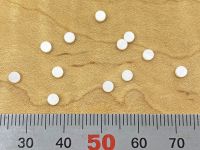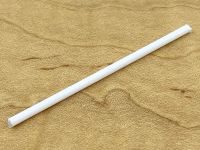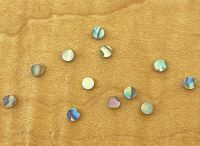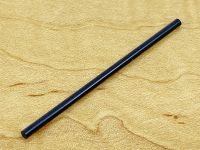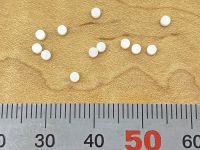Block Inlay Set - 10 Piece Les Paul Custom Style - Mother of Pearl
In stock
SKU
IN-021-115
$61.90
- Buy 2 for $55.71 each and save 10%
Mother of Pearl Block inlay set for an electric or acoustic guitar
- 1.5mm (0.060") thick
- Natural shell
- 10-Piece Les Paul Custom style
White Mother of Pearl is the most common inlay material for the fingerboards of guitars and other stringed instruments. It has a white or light silver colour with a natural iridescence and a subtle beauty.
These sets are made to the same dimensions as the fingerboard inlays of a Gibson Les Paul Custom guitar (full dimensions below) They're a great way to add decoration to the fingerboard of any acoustic or electric guitar. They should be installed into a cavities made in the fingerboard by routing or chiseling.
Always wear a dust mask when sanding and cutting pearl as the dust may be hazardous if inhaled.
Related Products
We found other products you might like!
White Mother of Pearl block inlay set for fingerboards
1st - 23mm x 27mm (0.91" x 1.06")
3rd - 23mm x 23mm (0.91" x 0.91")
5th - 25mm x 18mm (0.98" x 0.71")
7th - 27mm x 15mm (1.06" x 0.59")
9th - 29mm x 13mm (1.14" x 0.51")
12th - 30mm x 12mm (1.18" x 0.47")
15th - 32mm x 7mm (1.26" x 0.28")
17th - 33mm x 6mm (1.30" x 0.24")
19th - 34mm x 5mm (1.34" x 0.20")
21st - 36mm x 3mm (1.42" x 0.12")
(Note: sizes may vary slightly)
A cavity needs to be made in the timber for the inlays to be installed in. The best way to create this is with a Dremel router and small downcut bit.
If a Dremel isn't available the cavity can be made with a small sharp chisel.
The inlays should be set in using epoxy with some sanding dust mixed into it. The sanding dust should be the from the timber being inlaid.
Once the epoxy has dried level the inlays to the timber using a hard sanding block or fingerboard radius block with sandpaper attached with double-sided tape. This hard block will help keep the surface level.
1st - 23mm x 27mm (0.91" x 1.06")
3rd - 23mm x 23mm (0.91" x 0.91")
5th - 25mm x 18mm (0.98" x 0.71")
7th - 27mm x 15mm (1.06" x 0.59")
9th - 29mm x 13mm (1.14" x 0.51")
12th - 30mm x 12mm (1.18" x 0.47")
15th - 32mm x 7mm (1.26" x 0.28")
17th - 33mm x 6mm (1.30" x 0.24")
19th - 34mm x 5mm (1.34" x 0.20")
21st - 36mm x 3mm (1.42" x 0.12")
(Note: sizes may vary slightly)
A cavity needs to be made in the timber for the inlays to be installed in. The best way to create this is with a Dremel router and small downcut bit.
If a Dremel isn't available the cavity can be made with a small sharp chisel.
The inlays should be set in using epoxy with some sanding dust mixed into it. The sanding dust should be the from the timber being inlaid.
Once the epoxy has dried level the inlays to the timber using a hard sanding block or fingerboard radius block with sandpaper attached with double-sided tape. This hard block will help keep the surface level.


